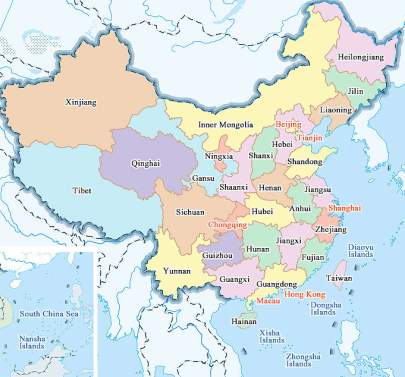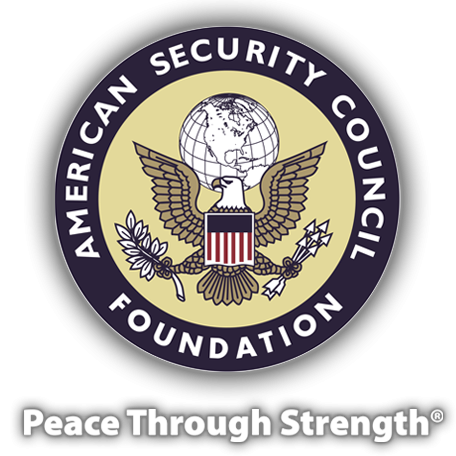China - Maps Matter
Monday, September 11, 2023
Written by Laurence F Sanford, Senior Analyst ASCF
Categories: ASCF News ASCF Articles

2021 Map courtesy of Bing.com images
The Chinese Communist Party (CCP), on August 28, 2023, issued its updated map of China. The map inflamed bordering countries due to encroaching territorial claims and demonstrated the CCP’s imperialist ambitions. The bordering countries are:
1. India - India was the first country to reject the new map issued by the Chinese Natural Resources Ministry. The map claims the northeastern state of Arunachal Pradesh and the occupied area of Aksai Chin as Chinese territories.
India and China have had military skirmishes and engagements over the past sixty years. Their 2100-mile shared border, the Line of Actual Control (LAC), is poorly demarcated with shifting riverbeds, Himalayan Mountains, and forests.
In October 1962, China invaded disputed territories in India. The United States and the world were distracted at the time by the Cuban Missile Crisis. This followed the 1959 Tibetan uprising against the Chinese invasion when the Dalai Lama fled from Tibet to India as a refugee.
Water resource dam developments are potential sources of future conflict. China is constructing a super hydroelectric dam on Tibet’s Zangbo River. It is three times the size of the Three Gorges Dam, currently the world’s largest dam. The Zangbo River flows into India’s Brahmaputra River..
India has twelve hydropower projects, with an estimated cost of $15 billion, in the planning stage for the northeastern Indian state of Arunachal Pradesh. The dams are dependent upon water flowing from the Tibetan plateau. India could be subject to CCP water supply control or “psychological warfare.”
2. Malaysia, Vietnam, Brunei, Indonesia, and the Philippines - All reject CCP’s “Nine Dash Line” claims to islands and atolls in the South China Sea (SCS), which are adjacent to their borders and in their Exclusive Economic Zone (EEZ). It is now called the “Ten Dash Line” as it added claims east of Taiwan.
The above five nations have overlapping EEZ claims in the SCS. Valuable fishing and minerals (oil/gas) resources in the SCS are vital to all bordering states. Fishing is an important food source but is endangered by overfishing by the CCP fishing fleet. The estimated number of Chinese fishing boats ranges from 200,000 to 800,000. They have depleted fishing stocks near China and are now expanding operations worldwide.
China’s contaminated Pearl River is dumping toxic chemicals into the ocean on the southeastern Chinese coast and northern reaches of the SCS. This also affects fishing yields.
The Hague-based International Court of Arbitration wrote that the CCP's claims to the SCS had no historical basis or historic title over the disputed waters. In typical communist fashion, the CCP ignored rules they disliked and continued building military outposts on man-made islands and atolls.
President Xi had promised President Obama not to militarize the SCS. XI lied and continued to militarize; Obama did not push back.
3. Taiwan - The CCP map includes Taiwan as part of China, even though Taiwan has never been under CCP control. Taiwan has been an independent country since 1949 when Chiang Kai-shek and the Kuomintang (KMT) army fled to Taiwan from mainland China following its defeat by the victorious CCP Peoples’ Liberation Army (PLA) under the leadership of Chairman Mao Zedong.
The KMT seized control of Taiwan and, for decades, claimed it represented all of China and would return to power on the mainland. Eventually, this claim faded.
From 1895 to 1945, Japan ruled Taiwan as a dependency. The Chinese Qing dynasty ceded it in the Treaty of Shimonoseki after the Japanese victory in the First Sino-Japanese War.
The CCP claims Taiwan is part of China and will do whatever it takes to bring it under its control, including military action. The issue is whether the CCP will, in fact, invade Taiwan. Such action would result in a direct response from the United States, Japan, and the Philippines.
4. Japan - In the East China Sea between China and Japan are the uninhabited Senkaku Islands, which Japan has controlled since 1895. China claims the islands were stolen from China in the Treaty of Shimonoseki (the same treaty that ceded Taiwan to Japan) and should have been returned to China after World War II. Chinese claims escalated after discovering underwater oil/gas resources in 1969. The dispute escalated in 2012 when Japan nationalized the Senkaku Islands, leading to violent protests in China. (The CCP, no doubt, instigated the protests.) Chinese coast guard and fishing vessels routinely violate these Japanese territorial waters.
5. Russia - The Amur River separates China and Russia. The Bolshoi Ussuriysky Island in the river (in China, known as Heixiazi or Black Bear) has been shared between China and Russia after an agreement finalized in 2008 that ended over a century of dispute. The 2023 CCP map now includes the entire island. Russia fought a brief border war with China in 1969 near the Amur River and Xinjiang.
Siberia was gradually absorbed by Russian fur traders and settlers beginning in the 16th century from nomadic Turkic/Mongol tribes. In the 1860s, Russia seized over 350,000 square miles of Manchurian China from the weak Chinese Qing dynasty with its rich natural resources and Pacific Ocean coastline. The Amur River then became the border under a series of treaties to settle the Opium Wars. The CCP considers these treaties unjust.
Summary
The CCP uses maps to justify imperial actions. By claiming lands and seas it does not control, it agitates the population to support aggression and the ensuing state mandates and restrictions.
China is a fascist country ruled by the Chinese Communist Party. Both fascism/Nazism and communism are socialist totalitarian ideologies under which the state controls all the levers of power. The only difference between the two is that the fascist state allows private property and business ownership, whereas, under communism, the state owns all property, which includes owning human beings. An example of CCP human ownership is the forced abortions on tens of millions of unborn babies during its “one-child policy.”
Marxist communism is based on grievances. The new CCP map is a grievance against an old historical activity that doesn't fit the CCP's perception of what should have been.
China acts like Nazi Germany by preaching past grievances, the Han Chinese's racial superiority, and seizing/claiming territory from neighboring countries. The Chinese people are subjected to constant propaganda about its economic and military prowess.
Action
The world needs to resist CCP aggression and seek to peacefully bring communism down, as was done in the Soviet Union.
1. Identify the CCP as a threat to Western Civilization and the free world.
2. Increase economic and military capabilities through alliances to ensure the CCP cannot intimidate individual countries.
3. Reciprocate CCP policies against America. Google, Facebook, and leading media companies cannot operate in China. Chinese media companies should not be allowed to operate in America: Ban TikTok, Shein, WeChat, and other Chinese internet companies.
Prohibit Chinese nationals from buying U.S. land.
4. Decouple from the Chinese economy. It is a societal suicide to depend upon Chinese technology for so-called “green energy” while dismantling one of America’s great strengths, the carbon-based energy industry.
5. Increase “gray zone” activities actions below kinetic and above diplomatic.
Peace Through Strength!
Laurence F. Sanford
Senior Analyst
American Security Council Foundation
www.ascf.us











